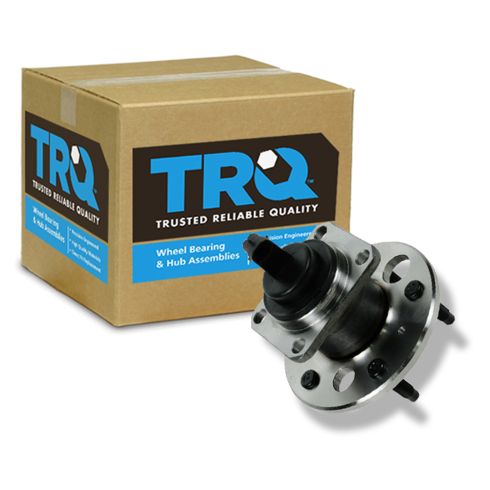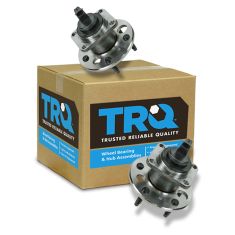1ASHR00030-Rear Wheel Bearing & Hub Assembly TRQ BHA54176

Replaces
1995 Olds Aurora Rear Driver Side Wheel Bearing & Hub Assembly TRQ BHA54176

Product Reviews
Loading reviews
5.00/ 5.0
7
7 reviews
Easy installation
July 16, 2017
I reviewed the installation video twice, wrote down the steps and got the tools ready. The installation went just like on the video and took about two hours which included washing down the inside of the wheel rim. Parts fit well, good quality and the part was delivered in five working days. Great quality and price. Who could ask for more.
No complaints!
December 25, 2017
I have been satisfied with all the parts I've ordered and will continue to order parts in the future.
Great online parts
January 15, 2018
Well let me start by saying I was vary pleased when I got the rear wheel bearing for my 03 Buick Lesabre
The quality of TRQ surprise me and for less then $40 compared to almost $300 from ANY parts stores around Augusta, ME
I work on my own cars because I am vary capable and love working on cars Trucks well pretty much anything mechanical I would recommend this a hundred and 20% to anyone looking to buy parts cheap and the best part is you don't even have to deal with the part store employees that don't know jack s**t
Great
May 20, 2018
This hub fit perfectly and appears to be of good quality. Initially I would recommend the TRQ hubs, but time will tell the story. It has only been on the car a few weeks.
Perfect fit!
August 5, 2019
Was a challenge to get the old assembly off (hammering and lots of krill oil did not do the trick). Was marvelous to have 1aauto video to guide me through the replacement!!! Found a 2nd video that showed me how to use a piece of all thread to release the old unit. BINGO! Part was a perfect fit--JOB DONE!!! /Diane
Good parts
October 16, 2020
Good parts at a reasonable price
Great!
August 20, 2023
Perfect fit and made for a quick and easy installation.
Customer Q&A
where is this bearing made?
August 9, 2021
10
These are manufactured by TRQ. TRQ is a high quality, high-end name brand that we offer and back with our 1A Auto Limited Lifetime Warranty.
August 10, 2021
Jessica D
Oldsmobile is a registered trademark of General Motors Company. 1A Auto is not affiliated with or sponsored by Oldsmobile or General Motors Company.
See all trademarks.









